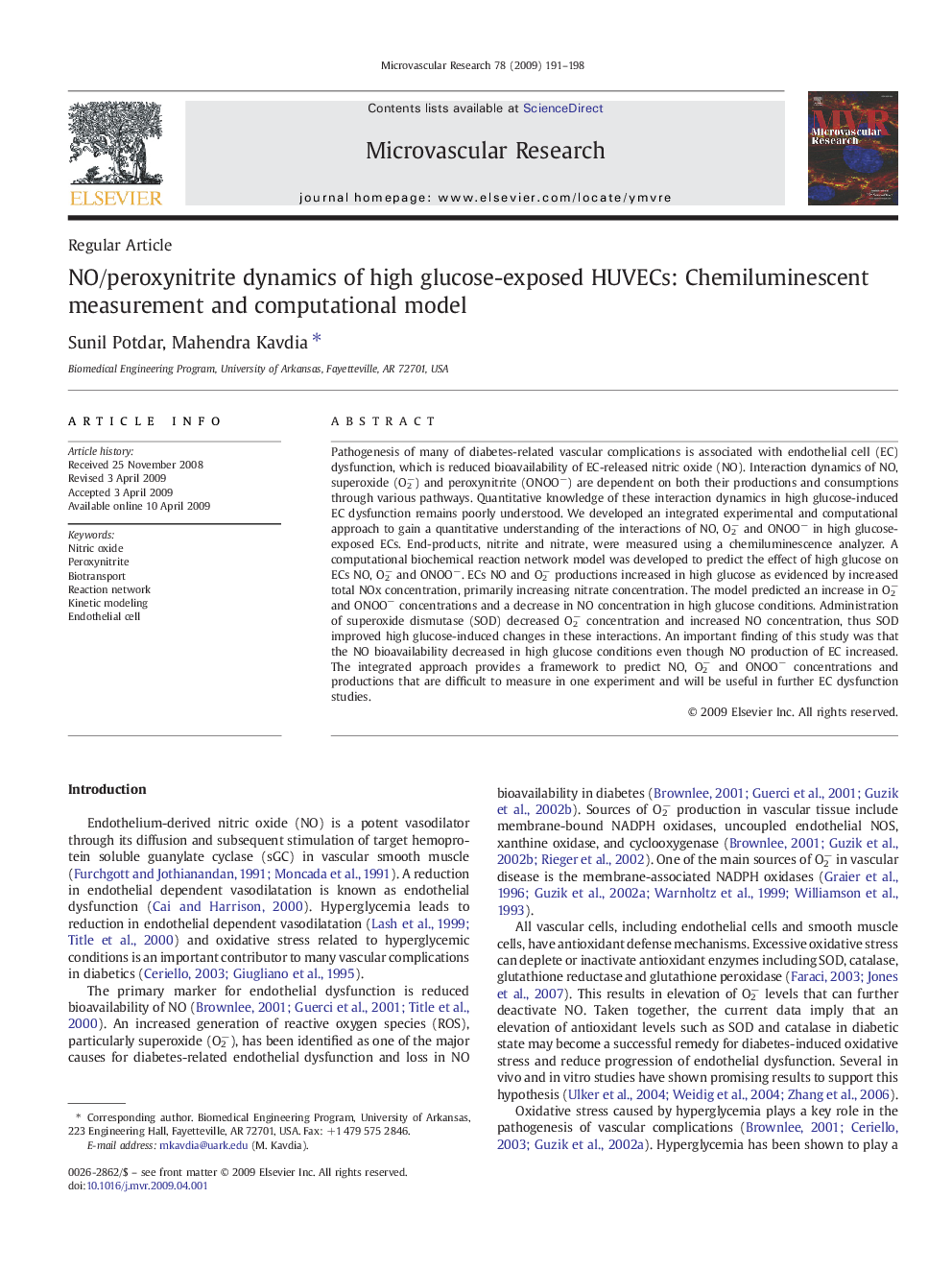| Article ID | Journal | Published Year | Pages | File Type |
|---|---|---|---|---|
| 1995156 | Microvascular Research | 2009 | 8 Pages |
Pathogenesis of many of diabetes-related vascular complications is associated with endothelial cell (EC) dysfunction, which is reduced bioavailability of EC-released nitric oxide (NO). Interaction dynamics of NO, superoxide (O2−) and peroxynitrite (ONOO−) are dependent on both their productions and consumptions through various pathways. Quantitative knowledge of these interaction dynamics in high glucose-induced EC dysfunction remains poorly understood. We developed an integrated experimental and computational approach to gain a quantitative understanding of the interactions of NO, O2− and ONOO− in high glucose-exposed ECs. End-products, nitrite and nitrate, were measured using a chemiluminescence analyzer. A computational biochemical reaction network model was developed to predict the effect of high glucose on ECs NO, O2− and ONOO−. ECs NO and O2− productions increased in high glucose as evidenced by increased total NOx concentration, primarily increasing nitrate concentration. The model predicted an increase in O2− and ONOO− concentrations and a decrease in NO concentration in high glucose conditions. Administration of superoxide dismutase (SOD) decreased O2− concentration and increased NO concentration, thus SOD improved high glucose-induced changes in these interactions. An important finding of this study was that the NO bioavailability decreased in high glucose conditions even though NO production of EC increased. The integrated approach provides a framework to predict NO, O2− and ONOO− concentrations and productions that are difficult to measure in one experiment and will be useful in further EC dysfunction studies.
